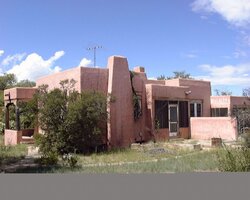I've been turned down by every contractor who came to bid on installing isulation in the ceiling of this old place. The problem - not enough room between the roof and ceiling joists - only 15" max to 8" min. So I went to the non-licensed guys. The good new is - I found someone who will do the job. This guy has two kids and he says they are small enough to get around up there and have done this sort of thing for him before. The bad news is, he will only do fiberglass batts. I was wanting to do spray-in cellulose, but he won't do it.
So... besides the obvious precautions to take when working with fiberglass, does anyone have any words of wisdom to share? Things to look out for? I've never worked with fiberglass before on this scale. I'm planning on using R39 batts, I think they are kraft-faced.
So... besides the obvious precautions to take when working with fiberglass, does anyone have any words of wisdom to share? Things to look out for? I've never worked with fiberglass before on this scale. I'm planning on using R39 batts, I think they are kraft-faced.


 )
)